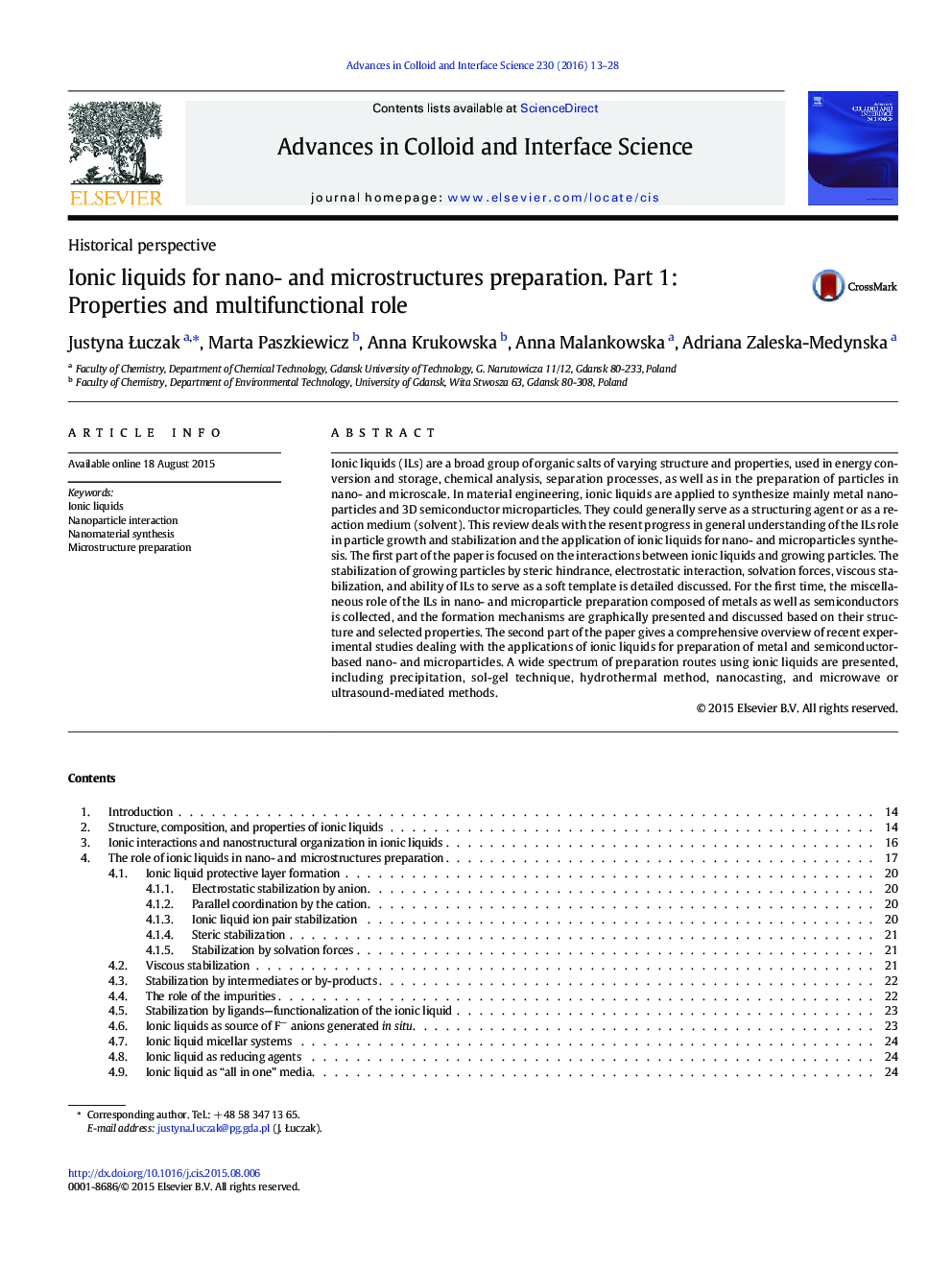| Article ID | Journal | Published Year | Pages | File Type |
|---|---|---|---|---|
| 590600 | Advances in Colloid and Interface Science | 2016 | 16 Pages |
•ILs are used as structuring agent or solvent to form metal/semiconductor particles.•Mostly imidazolium ILs are used due to good physiochemical and transport properties.•Growing metal particles are stabilized by steric, electrostatic interaction with ILs as well as solvation forces and viscous stabilization.•Differently shaped ILs micellesor microemulsions can work as a soft template for growing particles.
Ionic liquids (ILs) are a broad group of organic salts of varying structure and properties, used in energy conversion and storage, chemical analysis, separation processes, as well as in the preparation of particles in nano- and microscale. In material engineering, ionic liquids are applied to synthesize mainly metal nanoparticles and 3D semiconductor microparticles. They could generally serve as a structuring agent or as a reaction medium (solvent). This review deals with the resent progress in general understanding of the ILs role in particle growth and stabilization and the application of ionic liquids for nano- and microparticles synthesis. The first part of the paper is focused on the interactions between ionic liquids and growing particles. The stabilization of growing particles by steric hindrance, electrostatic interaction, solvation forces, viscous stabilization, and ability of ILs to serve as a soft template is detailed discussed. For the first time, the miscellaneous role of the ILs in nano- and microparticle preparation composed of metals as well as semiconductors is collected, and the formation mechanisms are graphically presented and discussed based on their structure and selected properties. The second part of the paper gives a comprehensive overview of recent experimental studies dealing with the applications of ionic liquids for preparation of metal and semiconductor-based nano- and microparticles. A wide spectrum of preparation routes using ionic liquids are presented, including precipitation, sol-gel technique, hydrothermal method, nanocasting, and microwave or ultrasound-mediated methods.
Graphical abstractFigure optionsDownload full-size imageDownload as PowerPoint slide
